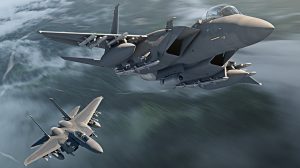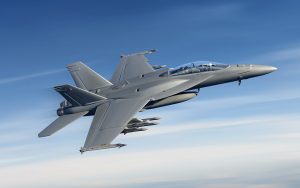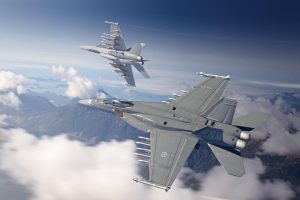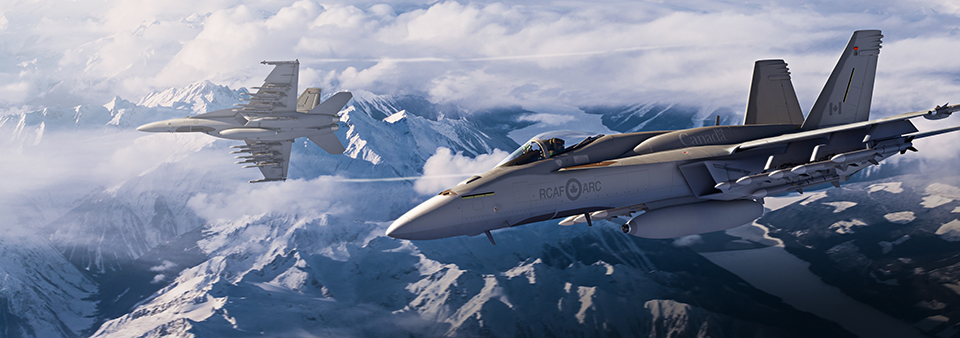SHAH ALAM: Boeing legacy fighters on steroids. Boeing – without any contract to produce stealth fighters – have reinvented its legacy fighters in order to prolong their service lives. The two are of course, the F-15EX and the Super Hornet Block IIIs. The re-invented fighters are meant for the US service, the USAF and USN, respectively, though it is also proposed for exports.
Boeing has also signed a deal with Japan to upgrade its F-15Js into the Japanese Super Interceptors. It is likely the parts and equipment for the upgrades will used the same things meant for the EX. The only difference is that the Japanese version will used the old airframes already in service with the Japanese Air Self Defence Force. The cost for the upgrade for 98 aircraft which include new AESA radars, mission mission computers and self defence systems was pegged initially at $4.5 billion.


As for the EX, on July 13,
The USAF awarded Boeing a nearly $1.2 billion contract to build the first lot of eight F-15EX advanced fighter jets to help the service meet its capacity requirements and add capability to its fighter fleet. The award also covers support and one-time, upfront engineering costs. Already under construction at the Boeing F-15 production facility in St. Louis, the first two jets deliver next year.
The USAF is also announcing the overall Indefinite Delivery Indefinite Quantity contract with a ceiling value of nearly $23 billion for F-15EX.
“The F-15EX is the most advanced version of the F-15 ever built, due in large part to its digital backbone,” said Lori Schneider, Boeing F-15EX program manager. “Its unmatched range, price and best-in-class payload capacity make the F-15EX an attractive choice for the USAF.”
The F-15EX carries more weapons than any other fighter in its class, and can launch hypersonic weapons up to 22 feet long and weighing up to 7,000 pounds.


On June 17, Boeing delivered the first first two F/A-18 Block III Super Hornets to the US Navy for flight testing. One jet is a single-seat E model and the other is a two-seat F model. USN in May 2019, awarded a three-year contract to Boeing for 78 Super Hornets.
The Block III configuration adds capability upgrades that include enhanced network capability, longer range, reduced radar signature, an advanced cockpit system and an enhanced communication system.


According to the USN
“this new multi-year contract benefits the USN and Boeing by allowing both to schedule future production and Navy officials estimate this multi-year model saves a minimum of $395 million on this contract valued at approximately $4 billion
So what is this got to do with Malaysia then. Nothing really, just things to ponder on.
— Malaysian Defence
If you like this post, buy me an espresso. Paypal Payment

View Comments (13)
We cause SH or F-15 as a Gap Filler soon we can get New 5th Gen Fighter soon !
The contracts sounded like new build planes so it seems that USAF & USN won't be phasing out Eagle & SH in the near future despite the F-35 coming on board. Neither does these enhancement are for keeping them relevant in the 2ndary roles, nope, they are meant to keep these platforms at the cutting edge in the frontlines.
@Joe
We should really reconsider getting the Super Hornets then, as the US is probably going to use them for a long time
Boeing do have a new contract for the T-7A Red Hawk of which 351 jets are in production for the USAF, RMAF should add in the T-7 as a candidate for the LCA
Reply
Its not about RMAF adding the T-7 for the project. Its about Boeing getting it into service with USAF before the LCA project moved into a fully funded programme. If it is I am sure Boeing will surely try to get it into the tender process. If its not in service with USAF before the tender process kicks in I don't think it will be in it, though I must admit stranger things have happened before
@ASM
By the time we start looking for new MRCA (post 2030), there will be more 5th gen fighters available like TFX and KFX which the KFX would cost around the same as Super Hornet. That being said there might be a block 4 SH introduced by then. Its signature could still be reduced and the apg79 radar can be improved but i doubt there will be more SH variants after the block 3.
@P K Lo
T-7A might be a little too late to the party right now and they are not among the candidates for LCA program but we'll see what will happen.
@Luqman
Realistically I don't think the 5th gen MRCA will be ready by 2030, judging by development time of F-35 and Rafale (around 20 years). So if we could *somehow* trade those Hornets and get its upgraded sibling with all its bells and whistles that IMO would be a sound decision. As for the Sukhois... well I dunno either retire them, put them in storage or maybe sell them to India.
@ASM
"US is probably going to use them for a long time"
They are going to use them until UCAVs have matured for operational use which is just over the horizon likely in 10-15 years time. We don't have the same luxuries to change in such a short time span as we're going to use MRCA for the next 30-40 years so we must see ahead into the future not what is being used right now. Anyways, we aren't going to buy them now so no point to consider what's available today.
@P K Lo
I was also advocating T-X for LCA/LIFT until I found out they aren't yet setup for munitions delivery so nope it is out of the equation. Unfortunately.
We would only realistically to start shop around for MRCAs around 2030. Now is 2020. Does any of you think that it is wise to get a new MRCA in the guise of SH then?
In 2030, singapore would have operational squadrons of F-35, china would have a matured J-20 operations, and probably would have multiple aircraft carriers with new aircraft carrier capable stealth fighters in the works. South Korea has completed KF-X development and are ramping up production, with Indonesia getting the KF-X too.
Also if you are getting SH in 2030, you will probably need to use those SH to 2060 at least. So if we get the SH, we would probably be the only airforce without 5th gen fighters in South East Asia from 2030-2060. Would you want that situation to happen?
Would you take the SH to go against these? Well Indians think the Rafale is better than those J-20 because the Rafale has been "battle proven". If that is the case, then the Supermarine Spitfire or North American P-51 Mustang would be better than both as they are much more "battle proven" !
http://pbs.twimg.com/media/Ed_6767U4AA2DJ6.jpg
http://pbs.twimg.com/media/Eeb1LlVXgAAqqQ6.jpg
http://pbs.twimg.com/media/EZLFlzlUcAY8Aqc.jpg
http://pbs.twimg.com/media/EHJh9u0UUAAjaLv.jpg
http://pbs.twimg.com/media/EDlPQxgVUAAiU5a.jpg
@ASM
"Realistically I don’t think the 5th gen MRCA will be ready by 2030, judging by development time of F-35 and Rafale (around 20 years)"
KFX started in 2001 so its been 19 years since then.....
@...
"South Korea has completed KF-X development"
Well to be exact it is almost complete. Current update for KFX are
- AESA radar prototype will be shown this month (which is kinda cool!)
- GE F414-400k engines already arrive
- KAI is constructing the 1st airframe
- IRST is Skyward from Leonardo, same as on Gripen E/F which use the latest tech in IRST.
1st KFX protoype should fly by 2021 or 2022 followed by 4 years of testing/evaluation circa 2026 and enter service by 2028.